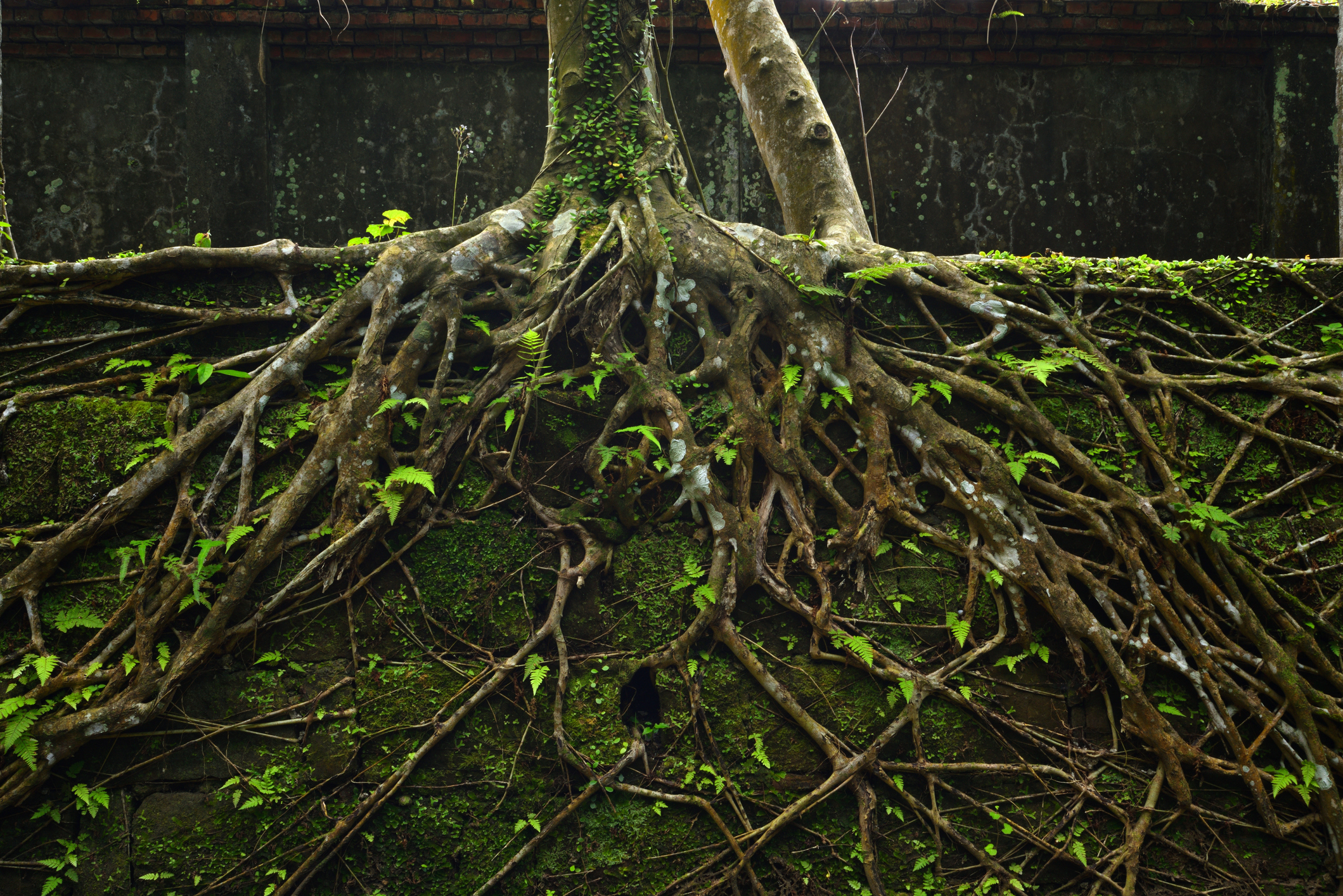How to kill tree roots – in backyards and pipework
If you have to kill tree roots, this is what the experts suggest as the best and fastest ways to do so


If you want to know how to kill tree roots, it's likely that a tree has been removed, with only the stump and root system remaining. These roots may be causing problems, exploiting existing weaknesses pipework and patios, or even house foundations.
If you know how to remove a tree stump, you might also know that a stump left in might take the opportunity to reshoot. In this case, you will need to remove of the root system as is possible.
'Always take care when trying to kill or remove tree roots. If you want to cut up the root system to kill it, be aware that it could be wrapped around underground pipes or cables,' says Fiona Jenkins, gardening expert at MyJobQuote. 'Should you be in any doubt or suspect that the root system is well established, hire a reputable arborist to tackle it for you. This will save you time and effort and prevent accidental damage.'
It goes without saying of course that, for many, killing tree roots will need the services of a professional, and should never be attempted with the tree still standing.
Here, we explode the myths around killing tree roots and reiterate that the best person to remove them, if they need it, is a professional.
How to kill tree roots
Killing tree roots – along with tree removal and controlling tree root growth generally – could save you both inconvenience, property damage and expense in the long run.
Prevention is better than cure, so as you plant your garden, ensuring the trees you put in are of a suitable size and, in some specific cases, have a root barrier around the roots will save you having to deal with this problem in future.
'It is really important to understand that trees don’t cause the initial damage to pipes,' advises John Parker, Chief Executive Officer, Arboricultural Association. 'They can only exploit existing weaknesses. So if a pipe isn’t maintained, and it cracks, then tree roots could exploit that and make things worse. But the tree is extremely unlikely to have actually caused the damage. Tree root damage to pipes is really a sign of a lack of infrastructure maintenance.'
Can you kill tree roots with boiling water?
You cannot kill tree roots with boiling water. There is a theory that you can kill tree roots with boiling water, by exposing as much of them – and the stump if it's still intact – and drilling holes into them. Pour boiling water into the holes is said to cause heat-shock to the roots. This will not work.
Can you kill tree roots with rock salt?
Gena Lorainne, a gardening and landscaping expert at Fantastic Services suggests killing tree roots with rock salt.
'Dig several four inch holes into the cut surface of the tree trunk. Additionally, you can also drill some holes in the exposed roots (if present),' she says. 'Fill the holes with rock salt and pour water into them so the holes are filled to the top.
'A very important thing to remember is to avoid overfilling and spilling, as rock salt is toxic to other vegetation and pets. You will have to repeat this process several times for a couple of months and eventually, the salt will do its job and kill the tree roots. You will know that the job is done If there isn’t any regrowth from the trunk.'
Tristan Sissons, Garden Buying Manager at Homebase suggests sealing the holes drilled after the rock salt has been poured in with candlewax. 'This stops the salt from getting blown around the garden and harming other plants,' he says. 'Cover the tree stump with a plastic sheet or tarpaulin. Check on it every couple of weeks – when it’s dead, it will break up easily.'
However, John Parker of the Arboriculture Association disagrees: 'Pouring rock salt into holes drilled into tree roots is not a good idea, probably won’t work and should not be proposed as a solution to this perceived problem. A tree stump will take several months, and likely years, to break up, no matter how much salt is poured into/onto it.'
How to kill tree roots with herbicides
While you can kill tree roots with herbicides, John Parker advises that they 'should typically be a last resort, but if they are to be used to kill root systems this should only ever be done by a professional, probably using plugs, not by somebody cooking up their own concoction at home.'
Can you kill tree roots in pipes with boiling water?
It is unlikely that flushing anything, from boiling water to baking soda, vinegar or salt, all of which you will see suggested on the internet, will do anything to kill tree roots.
'Even if it did have some effect, the roots would soon grow back unless the pipe was fixed,' says John Parker.
Which trees have the most invasive roots?
Just as with invasive plants, which can cause damage to masonry, fences and other plants, there are some trees you will want to avoid planting near buildings. However, says John Parker, 'it is all about planting the right tree in the right place, with the right aftercare. Context is everything – soil type, proximity to structures or infrastructure, local climatic conditions, maintenance, etc.'
Why do tree roots invade pipework?
A tree's roots are driven to look for water and nutrients, so it's a given that they will gravitate towards cracked pipework underground, especially if there are the tiniest of leaks coming from them. Tree roots can invade even the smallest of gaps, causing wider damage, so should any cracks in pipework or masonry should be dealt with as soon as they are discovered.
Sign up to the Homes & Gardens newsletter
Design expertise in your inbox – from inspiring decorating ideas and beautiful celebrity homes to practical gardening advice and shopping round-ups.

Lucy Searle has written about interiors, property and gardens since 1990, working her way around the interiors departments of women's magazines before switching to interiors-only titles in the mid-nineties. She was Associate Editor on Ideal Home, and Launch Editor of 4Homes magazine, before moving into digital in 2007, launching Channel 4's flagship website, Channel4.com/4homes. In 2018, Lucy took on the role of Global Editor in Chief for Realhomes.com, taking the site from a small magazine add-on to a global success. She was asked to repeat that success at Homes & Gardens, where she has also taken on the editorship of the magazine.
-
 Designers share how to make your outdoor living room look more expensive – and the affordable products to get you there
Designers share how to make your outdoor living room look more expensive – and the affordable products to get you thereFrom layered lighting to luxe-looking textiles, these simple swaps made all the difference
By Charlotte Olby Published
-
 5 surprising but brilliant ways to clean with old socks – from perfectly buffing stainless steel to deterring pests naturally and more
5 surprising but brilliant ways to clean with old socks – from perfectly buffing stainless steel to deterring pests naturally and moreTackle dust in tricky corners, clean your mirrors and even banish bad odors with those rogue single socks
By Andy van Terheyden Published